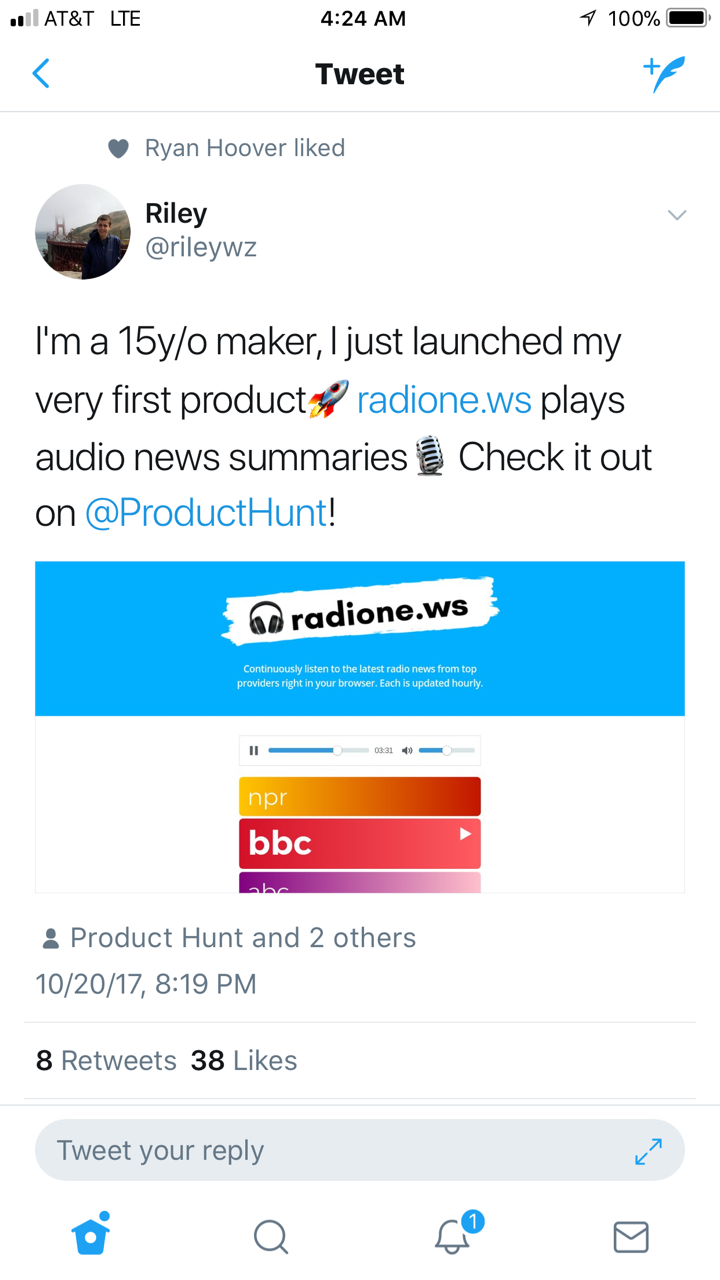
12 practical actions for doing SEO yourself.
Quick Summary of Contents
- 1 Choosing and owning the right domain name.
- 2 Choose a reliable, secure, and reputable web hosting company.
- 3 Centralize and automate your website.
- 4 Use web.config or .htaccess files to increase website performance.
- 5 Choosing www. or non-www. for your website.
- 6 Unique and Optimized Title, Description, Header Tags, and Image Alt Tags.
- 7 No-index irrelevant or low-quality web pages.
- 8 Structure internal linking efforts for search-safe rankings.
- 9 Eliminate 404 errors and use 301 redirects.
- 10 Map your website to increase search rankings using a sitemap file.
- 11 Automate blogging schedule and increase exposure to social media.
- 12 Measuring your SEO results using webmaster tools and web analytics tools.
- 13 Your goal for doing SEO yourself.
When driving more traffic and business to a small business website, most small business owners dread SEO much like the plague, especially when doing SEO yourself.
 I mean, really, where does a small business owner begin when doing SEO themselves?
I mean, really, where does a small business owner begin when doing SEO themselves?
Rather than determining the real pros and cons of do-it-yourself SEO, most small business owners opt for the traditional advertising methods of magazine ads, banner ads, newspaper ads, Craigslist, AngiesList, HomeAdvisor, etc.
But as the Internet and SEO progresses, your need and dependence on SEO to drive more business or even sustain a business is a looming issue that will not go away and must be addressed cost-effectively and timely.
It’s true that time, money, and labor always seem to find the small business owner holding the short end of the stick on one, if not all, of the previously mentioned.
For those of you that decide never to hire another SEO for anything again in your lives, today’s blog is just for you.
And for every small business owner unable to hire in-house SEO, an SEO professional, or an agency, this blog will help you attack the low-hanging actions of doing SEO yourself.
Let’s get started.
Choosing and owning the right domain name.
Not that it is wrong, but most small business owners will build a business and website using their company name.
For instance, Al’s Locksmith is locally owned, operated, and located in Austin, Texas. As most small business owners would do, Al buys his company’s domain name, AlsLocksmith.com, and has a website built on it.
Now there is nothing wrong with this approach, but let me say that this is the long way to grandma’s house if you’re trying to rank high in search engines for keywords “Austin locksmith” or “locksmiths in Austin.”
A more easy and effective approach for Al to have taken would have been to have branded his company by buying and using an exact match domain. Typically, exact match domains consist of 2-3 keywords at most.
So back to Al. Al should use an exact match domain like AustinLocksmith.com to build his local business and website. Owning this exact match domain will increase Al’s chances of ranking high in search engines for locksmith phrases that are targeted in the greater Austin area.
So, try to build your domain using an exact match domain name when possible.
Now, for a word of caution. DO NOT go and try to build secondary websites, also known as minisites, using exact match domains, and try linking them to your primary website.
Google and other search engines are cracking down on the use and abuse of low-quality or thin minisites and exact match domains for the sake of ranking high in search engines.
In addition, be sure that you own your domain name. DO NOT host your website on WordPress.com, blogspot.com, or any other sub-domain service. Also, don’t let the company that designs and develops your website own your domain name, or else they will hold you hostage.
Own your domain name outright, or you could find yourself learning the costly lesson of losing your domain name.
Choose a reliable, secure, and reputable web hosting company.
Yes, search engines consider your web host when ranking your website as well as your neighboring websites that share the same IP class.
Just as you wouldn’t want your business or home located in a high-crime area, treat your website with great care and protect your search rankings by choosing a reliable, secure, and reputable web hosting company to host your website.
In addition, be sure to select a virtual private server or dedicated server hosting plan with a dedicated IP address to limit the opportunity of being placed in a bad shared hosting web neighborhood.
Although shared hosting plans are less expensive and easy to come by, don’t risk the chance of being severely penalized by search engines because your website is associated with spammy neighboring websites.
Check out the following web hosting companies and their web hosting services: ServInt, Rackspace, Amazon, Bluehost, Hostgator, and GoDaddy.
Centralize and automate your website.
This action is probably one of the most important actions that can make or break your website in regard to ranking high in search engines.
Whether you own an e-commerce business, are a journalist, hobbyist, or blogger, and need just a simple website, it’s always in your best interest to centralize your website and automate it using a content management system.
Gone are the days of manual labor of developing a website by hand. You’re wasting time and effort trying to make them all work together when operating a decentralized website, blog(s), shopping cart, and/or a media library of resources and assets. This will set you back greatly in terms of obtaining and sustaining search rankings.
If you want a head start on your SEO effort, your best bet is to use a CMS like WordPress, Drupal, or Joomla to name a few. CMS provides an easy-to-use interface for you to manage your website.
In addition, CMS’ often offers the ability to sell products and services using e-commerce plugins as well as blogging, forums, and media or resource library options.
WordPress will be more than enough for most small business owners to handle your website. WordPress offers a large development community of customizable, search-friendly themes and plugins as do the other options. And most reputable web hosting companies offer one-click CMS installs and upgrades.
In addition, a CMS will help you create a search-friendly and search-safe website seeing you set up the correct architecture and install the proper SEO plugins when setting up your website.
Use web.config or .htaccess files to increase website performance.
One of the greatest features of a website that can increase a website’s performance and lead to ranking higher in websites is the use of web.config or .htaccess files.
The web.config file is used for websites hosted in a Windows environment, while the .htaccess file is used for websites hosted in a Linux environment.
Both files can be created by hand or automatically when you use a CMS. They are important because they provide the following opportunities:
- Prohibit hackers from hacking your website with spam or taking down your website.
- Create 301 redirects to pass the SEO juice from an old page to a new page or from an old domain to a new domain.
- Create a 404 redirect to a customizable error page for broken or mistyped URLs.
- Redirect all www traffic to non-www web URLs or the other way around.
- Redirect all HTTP traffic to HTTPS web URL or the other way around.
- Improve and optimize your website loading performance by compressing and caching files.
- Stop people from stealing or hotlinking to photos and using your website bandwidth.
- Secure directories and disable people’s browser directories as well as unwanted people snooping around certain web directories.
- Block unwanted visitors, search bots, or user agents that eat up your bandwidth.
Those are just some of the unique actions you can perform with either file to optimize and increase the performance of your website and obtain higher rankings in search results.
Choosing www. or non-www. for your website.
If you search the web long enough in regards to SEO, you’ll eventually run across content referring to duplicate content or website issues.
And one of the best things you can do to increase your SEO effectiveness and rankings overall is to instruct search engines which URL to use when there are multiple options, also known as canonicalization.
Duplicate content and website SEO issues sometimes occur inadvertently due to the sheer nature of some websites.
News, e-commerce, and websites with any sort of pagination or pages that use multiple parameters (i.e., product pages that use different parameters to display different attributes about products) are highly susceptible to duplicate content issues.
To handle duplicate content as it relates to pagination, you’ll want to use rel=”previous” and rel=”next” on your links.
As for non-search-friendly URLs that use parameters or duplicate pages in general, you’ll want to add a canonical tag reference to each page to inform search engines of the page it’s a duplicate of.
But be careful when addressing canonical issues because an incorrect implementation could cause your website to lose its search rankings or be de-indexed and lose search history altogether.
One way of handling duplicate content and website issues is adding the canonical tag to pages (e.g., <link rel=”canonical” href=”https://www.kickstartcommerce.com/” />). So if anyone types in any of the following addresses, whether HTTP or HTTPS or even links to my website using the following, search engines will view them as one page and not multiples:
- https://www.kickstartcommerce.com/index.php
- https://www.kickstartcommerce.com/index.php
- https://www.kickstartcommerce.com/
- https://www.kickstartcommerce.com
Personally, I prefer using a web.config and .htaccess file to fix canonical issues and force search engines and customers to visit only one website address instead of two.
For instance, I force both visitors and search engines to use www. instead of being able to view the same content from both www. and non-www (as shown above). It does not matter which you choose, but you must choose one and stick with it for your SEO to be effective.
This low-hanging SEO action is a very easy and simple fix that could put you on the right track SEO-wise.
Unique and Optimized Title, Description, Header Tags, and Image Alt Tags.
The next low-hanging action to perform while doing SEO yourself is to make sure all of your pages and content are uniquely created and optimized.
- Every page should have a unique and optimized title, description header tags, and alt-image tags.
- Page titles should be less than 70 characters and include the keyword or phrase close to the beginning.
- Page descriptions should be less than 160 characters in length and should use the keyword or keyword phrase at least 1-2 keywords.
- You should aim to have only one <h1> tag on the page used as the title, and it should contain the keyword or keyword phrase close to the beginning.
- Like this blog post, you should organize your content using <h2> and <h3> tags. Both can have keywords or keyword phrases but don’t not imperative.
- In addition, images should be used within your post when it makes sense. Images should also contain the keyword or keyword phrase with the title and alt text of images (e.g. <img src=”url” alt=”keyword phrase used in sentence describing image” title=”keyword phrase used in sentence describing image” />).
No-index irrelevant or low-quality web pages.
Every web page has a certain number of pages that are useless when it comes to SEO. Those pages tend to be terms and conditions, privacy, contact us, and sometimes the about us page to name a few.
For those useless, ineffective pages, I suggest that you use the robots tag to no-index those pages and prevent search engine indexing. This can be done manually or you also programmatically noindex/follow if you use a CMS like WordPress.
However, do follow the page using the following robots tag so that search engines follow the link.
<meta name=”robots” content=”noindex,follow,noarchive” />
If you want a page to be indexed, remove the no part of noindex, or don’t use the robots tag.
Structure internal linking efforts for search-safe rankings.
One of the biggest issues I find and see with most small business websites looking to implement SEO or enhance their current SEO efforts is their inability to have created a sound structure for internal linking of their website pages.
Some pages are leaking major link juice and page ranking following irrelevant internal links or external links to low-quality websites and websites in general. Some internal pages are linked, and some are not. Sometimes pages are nothing but a page full of links which are frowned upon by search engines due to resembling a link farm or network.
Most small business owners looking to increase their website’s search rankings have no rhyme, rhythm, or reason for how and why they choose to link or not link website pages. And because there is no plan or the plan is based on bad link-building strategies, there are less than stellar SEO results, if any at all.
For your website to come to life in search engines and rank high, it is imperative that you take the time to plan out your website architecture from the beginning.
Determine your website page and linking hierarchy in a written plan before you start developing your website and surely before doing SEO of any type yourself.
In addition, be sure you review it on a quarterly or annual basis. I’ve found success reviewing my linking structure every time I create a post and on a weekly and monthly basis.
Eliminate 404 errors and use 301 redirects.
Website and page errors are the arch nemesis of highly visible search rankings. Many times, 404 errors are caused due to name changes to files or mistyped links.
As a way to lessen the SEO impact of a 404 error, I recommend small business owners implement a custom 404 error page that uses your overall website design with a custom error message that the page was not found. This can be accomplished using a web.config or .htaccess file.
In addition, small business owners doing SEO themselves or having another party perform their SEO efforts can use tools like Screaming Frog, Google Analytics, Google Webmaster Tools, and Bing Webmaster Tools to track and monitor 404 errors.
For pages with URLs that have changed or been modified, or if you want to redirect a website from an old domain to a new domain, use a .webconfig or .htaccess file to execute 301 redirects not to lose your SEO link juice and page rankings.
In addition, use the custom 404 error technique to act as a safety net to keep visitors, customers, and search engines on your website in the event of a 404 page not found error.
Map your website to increase search rankings using a sitemap file.
One would be amazed at how a fully functioning and error-free sitemap file can breathe life into a website’s search marketing efforts and search rankings.
Think of the sitemap file as a suggestive command for search engines to index and follow the linking architecture of your website
Whether you create a sitemap by hand, which is highly discouraged, or auto-generate a sitemap file using a CMS or a sitemap service like XML-Sitemaps.com, make an effort to create and update a sitemap for your website as an architecture safety net.
Learn how to create and submit your sitemap to search engines.
If you’re not blogging or creating unique content, then shame on you and you shouldn’t expect much in terms of results doing SEO yourself.
Blogging has been around and has become the primary way for small business owners to position their websites for increased search rankings.
When doing SEO yourself, I encourage you to establish a sound content marketing plan built around educating and engaging with your customers, not search engines.
In addition, be sure to develop a consistent schedule of creating content and posting blogs at least a few times a week at a minimum.
The up the game and probability that your content will be shared by automating the blog posts and sharing on social media networks using tools like Hootsuite or SocialOomph to name a few.
These tools allow you to share content automatically, creating and increasing the opportunity for your content to be shared with the masses.
In turn, this will increase your backlink profile so you don’t spend each and every day around the clock posting. It’ll definitely keep you from breaking your neck trying to keep up with competitors that may have deeper pockets to hire in-house SEO help or outsource their SEO to an agency.
A few parting thoughts about blogging and sound content creation to increase the probability of your website garnering highly visible search rankings across major search engines.
With the introduction of blogs, many have found blogging to be a great way to help educate, inform, and engage both potential customers and customers to increase business.
In addition, this is one reason I don’t recommend that customers guest blog or allow guest blogging from anyone with a pulse pushing their content.
Now, of course, with the good of blogging, there are always the bad and ugly when those are solely blogging to hijack content or create thin or low-quality content stuffed with illegible sentences and chocked full of keywords.
If this is you and you are writing content for search engines first with no thought to providing value in helping customers learn or solve their challenges, then stop and make a real effort to write content that matters.
Customers will love you for this and share your content with the masses, leading search engines to favor and love your website enough to make it highly visible in search rankings.
Measuring your SEO results using webmaster tools and web analytics tools.
How can you know whether your website’s SEO effort is effective beyond rankings if you are not measuring your website in any aspect?
This is the question I always pose to small business owners doing SEO themselves and not using webmaster and web analytics tools to measure SEO results.
If one thing can make all the difference in you doing SEO yourself, it’s measuring your SEO results using web analytics and webmaster tools.
I’ve written a few posts on paid SEO tools as well as free SEO tools. I encourage you to read those posts as well as to create your own accounts for measuring your SEO results.
One great thing about webmaster tools, such as Bing and Google, is that both help you identify a multitude of problems, such as the following:
- Impressions and queries
- Click-through rates
- Website bounce rates
- Conversion rates
- Keywords and landing pages
- Broken links
- Visitor demographics
- Crawling and indexing errors and warnings
- Internal and external linking issues
- Hacking penalties
- and way more…
These tools are what the professionals use to manage your website and its SEO effectiveness.
And doing SEO yourself, you too can use the same tools minus the cost of what you pay us professionals. I encourage you to get very familiar with both the webmaster and web analytics tools regardless if you’re doing SEO yourself or hiring out for SEO services to be performed.
Your goal for doing SEO yourself.
So what should your goal be in doing SEO yourself?
Personally, I would hope your goal is to be on a continuum of forever learning SEO for the sake of growing your business to serve your employees and the customers you all choose to serve.
This has definitely been a post for the ages, and I hope you’ve been enlightened by all that has been discussed.
After all, SEO does not have to be tricky or an elusive black box. You may never learn to implement advanced SEO techniques to increase your search rankings, but you can attack the low-hanging SEO actions to garner profitable SEO rankings and results.
As a shameless post, I encourage those of you actively looking to do SEO yourself to purchase a copy of my latest book, A Practical Guide To Effective SEO.
Priced to be competitive and affordable, this book is written for small business owners to learn how to drive increased search engine rankings for their websites using sound, practical SEO methods. In addition, this 82-page ebook, filled with real-life examples and techniques to implement, definitely adds more context and in-depth clarity for you as a small business should focus on doing SEO yourself.













